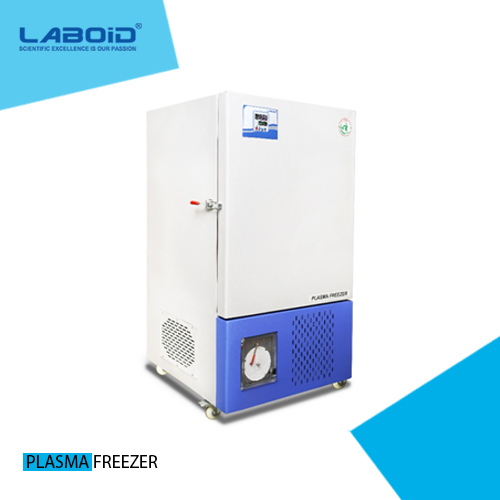
Plasma Freezer is a specialized refrigeration unit designed to store blood plasma and other biological samples at ultra-low temperatures. Typically maintained at -30°C to -40°C, these freezers play a crucial role in blood banks, hospitals, research laboratories, and pharmaceutical industries. By ensuring plasma remains in optimal condition, they help preserve life-saving components used in medical treatments and research.
How Does a Plasma Freezer Work?
Plasma Freezer use advance d refrigeration technology to achieve and maintain ultra-low temperatures. These units are equipped with high-performance compressors, thick insulation, and precise temperature control systems. They often feature alarm systems, digital monitoring, and backup power solutions to prevent fluctuations that could compromise stored plasma. The ability to maintain stable conditions is critical to preserving the integrity and functionality of plasma components.
Why is Plasma Storage Temperature So Important?
Blood plasma contains essential proteins, clotting factors, and other therapeutic elements that are highly sensitive to temperature variations. If plasma is not stored correctly, its properties degrade, rendering it unusable. The recommended storage temperature for frozen plasma is -30°C or colder, which prevents bacterial growth and biochemical changes. Ensuring these strict conditions guarantees that the plasma remains viable for transfusions and other medical applications.
Where are Plasma Freezers Used?
Plasma Freezer are commonly found in:
- Blood banks: Ensuring safe storage of donated plasma for future use.
- Hospitals: Maintaining emergency supplies for transfusions and surgeries.
- Research laboratories: Storing biological samples for medical and pharmaceutical studies.
- Biopharmaceutical companies: Preserving plasma-derived medications and vaccines.
These applications highlight the necessity of high-quality, reliable blood bank instruments, including Plasma Freezer , for the healthcare industry.
What Are the Key Features of a High-Quality Plasma Freezer?
When choosing a Plasma Freezer , it is essential to consider several key features:
1. Temperature Stability
A high-quality Plasma Freezer must maintain a stable internal temperature to ensure plasma remains viable. Digital controls, built-in alarms, and temperature recording systems help monitor conditions in real time.
2. Energy Efficiency
Modern Plasma Freezer are designed with energy-efficient compressors and insulation materials to reduce power consumption while maintaining performance.
3. Safety and Security Features
These freezers include features such as:
- Alarm systems for temperature fluctuations, power failures, and door openings.
- Backup battery support for continued monitoring during power outages.
- Lockable doors to prevent unauthorized access.
4. User-Friendly Design
Plasma Freezer should have intuitive digital controls, LED displays, and easy-access storage compartments for efficient organization and retrieval of plasma bags.
What Are the Benefits of Using a Plasma Freezer?
1. Extended Shelf Life of Plasma
Proper freezing conditions help plasma retain its therapeutic properties for extended periods, ensuring availability when needed.
2. Compliance with Medical Standards
Plasma Freezer meet regulatory requirements for safe plasma storage, including guidelines set by organizations such as the FDA, WHO, and AABB.
3. Reduced Waste and Cost Efficiency
By preserving plasma effectively, these freezers minimize waste and improve the overall efficiency of blood banks and healthcare facilities.
4. Enhanced Safety for Patients
Properly stored plasma ensures high-quality transfusions, reducing the risk of complications and improving patient outcomes.
How to Maintain a Plasma Freezer for Optimal Performance?
Proper maintenance is crucial to ensure a Plasma Freezer functions efficiently over time. Follow these best practices:
- Regular Cleaning: Prevent contamination by cleaning interior and exterior surfaces with disinfectants.
- Routine Temperature Checks: Monitor and log temperature readings to detect any fluctuations early.
- Defrosting When Necessary: Some models require manual defrosting to prevent ice buildup.
- Inspect Seals and Doors: Ensure airtight closure to maintain consistent internal temperatures.
- Schedule Professional Servicing: Annual servicing by qualified technicians can help detect and fix potential issues.
How to Choose the Right Plasma Freezer for Your Needs?
When selecting a Plasma Freezer , consider factors such as:
- Storage capacity: Choose a unit based on the volume of plasma you need to store.
- Temperature range: Ensure the freezer meets the required -30°C to -40°C specifications.
- Energy consumption: Look for models with energy-efficient features to reduce operational costs.
- Certifications and compliance: Ensure the freezer meets industry regulations and safety standards.
Conclusion: Investing in Reliable Plasma Storage Solutions
A Plasma Freezer is an indispensable Blood Bank Instruments that ensures the safety, longevity, and effectiveness of stored plasma. Choosing the right freezer can make a significant difference in the quality of patient care and research outcomes. Whether for hospitals, research labs, or pharmaceutical industries, investing in a reliable Plasma Freezer is a step toward better healthcare solutions.
For those seeking high-quality and industry-compliant Plasma Freezer , Laboidasia offers cutting-edge storage solutions tailored to meet modern medical and laboratory demands. Ensuring optimal storage conditions is essential in preserving life-saving plasma, and with the right equipment, you can maintain safety, compliance, and efficiency in every operation.